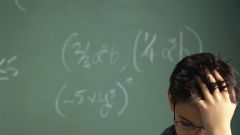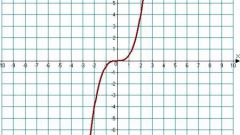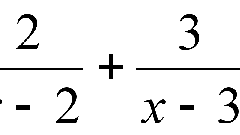Instruction
1
Learn how to solve a simple linear equation of the form ax+b=0. x is an unknown that must be found. Are called linear equations in which x can only be in the first degree, no squares and cubes. a and b are any numbers and a cannot equal 0. If a or b are represented as fractions, the denominator is never x. Otherwise you can get a linear equation.Solved linear equation simple. Move b to the other side of the equal sign. The sign that stood in front of b, is reversed. Was a plus - will be negative. Get ax=-b.Now find x, which divide both parts of equality on a. We get x=-b/a.
2
To solve more complex equations, remember the 1st identity transformation. Its meaning is the following. To both sides of this equation we can add the same number or expression. And by analogy, from both sides of the equation, you can subtract the same number or expression.Suppose you have the equation 5x+4=8. Subtract from the left and right side is the same expression (5x+4). We get 5x+4-(5x+4)=8-(5x+4). After opening parentheses is 5x+4-5x-4=8-5x-4. The result is 0=4-5x. Looks at this equation differently, but its essence remains the same. The initial and final equations are called identically equal.
3
Remember 2-d identity transformation. Both parts of the equation can be multiplied by same number or expression. By analogy - both parts of the equation can be divided into the same number or expression. Naturally, you should not multiply or divide by 0.Let there be the equation 1=8/(5x+4). Multiply both sides by the same expression (5x+4). We get 1*(5x+4)=(8*(5x+4))/(5x+4). After the reduction we get 5x+4=8.
4
Learn with the help of simplifications and transformations allow the linear equations to a familiar sight. Let there be the equation (2x+4)/3-(5x-2)/2=11+(x-4)/6. This equation is exactly linear, because x is in the first degree and in the denominators of fractions x is missing. But the equation is not like a simple, parsed into 1-m step.Apply 2-d identity transformation. Multiply both sides by the number 6 is the common denominator of all the fractions. We get 6*(2x+4)/3-6*(5x-2)/2=6*11+6*(x-4)/6. After the reduction of the numerator and denominator have 2*(2x+4)-3*(5x-2)=66+1*(x-4). The choir 4x+8-15x+6=66+x-4. 14-11x=62+x.Applicable 1-e the identity transformation. Subtract from the left and right side of the expression (62+x). Get 14-11x-(62+x)=62+x-(62+x). 14-11x-62-x=0. We get-12x-48=0. And it is the simplest linear equation, the solution of which dismantled at the 1st step. Complex initial expression with fractions we have presented in the usual form, using the identity transformation.
Note
Often mistakes are made when disclosure of brackets. Remember that if before the parenthesis is a minus sign, while getting rid of the brackets, the signs change to the opposite. For example, at the 4th step of opening bracket -(62+x)=-62-x.
Useful advice
Solve more equations textbook at the end of which there are answers. Check the correctness of assignments.










